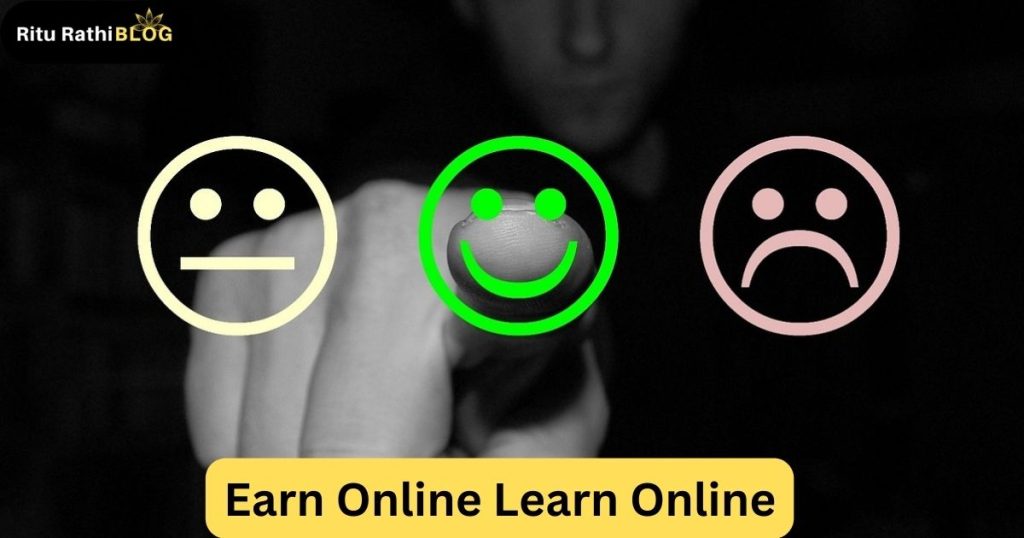Social media has become an essential part of modern marketing, providing businesses with a powerful platform to reach, engage, and build relationships with their target audience. However, with so many brands competing for attention, it can be challenging to stand out and grow your audience.
To succeed on social media, it’s important to have a strategic approach that leverages the unique features of each platform and resonates with your target audience.
In this article about 8 Proven Social Media Branding Strategies To Grow Your Audience, we’ll explore the best social media branding strategies to help you build a strong and engaged community around your brand.

8 best ways to attract your target audience on social media :
- Define your brand identity
- Know your target audience
- Choose the right platforms
- Create engaging content
- Use influencer marketing
- Host social media contests and giveaways
- Engage with your audience
- Track and measure your results
Let’s understand one by one :
1. Define your brand identity:
Develop a clear and consistent brand message, visual identity, and tone of voice that resonates with your target audience.
Your brand identity is the set of characteristics, values, and personality traits that define your brand and differentiate it from others. Developing a clear and consistent brand identity is critical to building a strong and recognizable brand on social media.
This includes defining your brand message, which should communicate what your brand stands for and what it offers to its audience. Your visual identity should be cohesive and include elements like your logo, color scheme, and typography.
And your tone of voice should reflect the personality of your brand and how you want to be perceived by your audience. By establishing a strong brand identity, you can create a memorable and meaningful connection with your audience and make it easier for them to recognize and trust your brand.

2. Know your target audience
Research your target audience to understand their demographics, interests, and behaviors, and use that information to tailor your content and messaging.
Knowing your target audience is a crucial step in developing an effective social media strategy. This involves researching and understanding the demographics, interests, and behaviors of the people you want to reach through social media. This information can then be used to tailor your content and messaging to better resonate with your target audience and effectively engage with them on social media.
Demographic information can include things like age, gender, location, education level, and income, while interests and behaviors can encompass things like hobbies, interests, purchasing patterns, and media consumption habits. By understanding this information, you can create content that appeals to your target audience and speaks to their needs and desires.
For example, if your target audience consists of young adults aged 18-24, you might create content that is more visual, interactive, and relatable to their interests, such as using memes, GIFs, and short-form videos. On the other hand, if your target audience consists of busy professionals aged 35-50, you might create more informative content that is optimized for mobile devices, such as infographics and short blog posts.
In summary, understanding your target audience is crucial to developing an effective social media strategy, and should inform all of your content and messaging decisions.

3. Choose the right platforms
Choose the social media platforms where your target audience is most active, and focus on creating a strong presence on those platforms.
Choosing the right social media platforms is an important step in growing your audience and maximizing the impact of your social media efforts. Not all social media platforms are created equal, and it’s important to focus your efforts on the platforms where your target audience is most active.
To determine which platforms are most relevant for your brand, consider factors such as the demographics of the platform’s user base, the types of content that perform well on the platform, and the type of interaction and engagement that takes place on the platform.
For example, if your target audience is primarily composed of young adults, platforms like TikTok, Instagram, and Snapchat may be the best options for your brand. If you’re targeting a more professional audience, platforms like LinkedIn, Twitter, and Facebook may be more appropriate.
Once you’ve chosen the right platforms, focus on creating a strong presence on those platforms by consistently posting engaging content, responding to comments and messages, and actively engaging with your followers. By focusing your efforts on the platforms where your target audience is most active, you can maximize your reach, engagement, and growth potential on social media.

4. Create engaging content:
Develop a content strategy that includes a mix of high-quality visuals, videos, blog posts, and other content that resonates with your target audience and encourages them to engage with your brand.
Creating engaging content is a key component of a successful social media strategy, as it is what drives audience engagement and helps grow your brand’s following. To achieve this, it is important to develop a content strategy that includes a mix of high-quality visuals, videos, blog posts, and other types of content that resonate with your target audience and encourage them to engage with your brand.
This content should be designed to educate, entertain, or inspire your audience and offer value that they can’t find anywhere else. It should also align with your brand’s identity and messaging, and be optimized for the specific social media platforms you are using.
For example, you could create eye-catching graphics and infographics to share on Instagram, short and informative videos for Twitter, and longer-form blog posts for your brand’s website. You can also experiment with different types of content, such as live videos, stories, and interactive quizzes, to see what resonates best with your audience.
In addition to creating high-quality content, it is also important to be consistent and publish content on a regular basis. This will help keep your audience engaged and ensure that your brand remains top-of-mind.
In summary, a strong content strategy is critical to building a strong and engaged community around your brand on social media. By creating engaging content that resonates with your target audience, you can drive engagement, build trust, and grow your audience over time.

5. Use influencer marketing:
Partner with influencers in your industry who have a large following, and collaborate on content and promotions that will reach a wider audience.
Influencer marketing is a strategy in which brands partner with individuals who have a significant following on social media to reach a wider audience and build their brand’s reputation. By collaborating with influencers in your industry, you can tap into their existing audience and gain exposure to a new group of potential customers.
When partnering with influencers, it’s important to find individuals who align with your brand’s values and have a following that closely matches your target audience. You can then collaborate on content, promotions, and other initiatives that will help you reach a wider audience and increase brand awareness.
For example, you could have an influencer create a sponsored post or video featuring your product, host a giveaway with your brand, or participate in a joint event. You can also work with influencers to create unique and engaging content that showcases your brand in a positive light and helps build a connection with your target audience.
Influencer marketing can be an effective way to reach a wider audience, build brand awareness, and drive engagement on social media. However, it is important to approach it carefully, as working with the wrong influencer or using them in an inauthentic way can have a negative impact on your brand’s reputation.
In summary, influencer marketing can be a powerful tool for growing your audience and building your brand on social media. By partnering with influencers in your industry who have a large and engaged following, you can reach a wider audience and increase your brand’s visibility and reputation.
Must Read before choosing right influencer for your brand

6. Host social media contests and giveaways:
Run contests and giveaways to incentivize people to follow your brand and share your content with their own networks.
Hosting social media contests and giveaways can be a highly effective way to grow your audience and increase engagement on social media. By offering incentives such as prizes or discounts, you can encourage people to follow your brand, engage with your content, and share it with their own networks.
When planning a contest or giveaway, it’s important to set clear rules and guidelines and choose a prize that will be appealing to your target audience. You can also create a hashtag for the contest and promote it through your social media channels and other marketing initiatives.
For example, you could run a photo contest on Instagram where followers are encouraged to share a photo using your brand’s products and tag your brand’s account. You can also run a Twitter giveaway where followers can retweet a specific tweet for a chance to win a prize.
Contests and giveaways can be an effective way to drive engagement and grow your audience, as they provide an incentive for people to follow your brand and engage with your content. However, it is important to approach them strategically and make sure that the prize is relevant to your target audience and aligns with your brand’s values.
In summary, hosting social media contests and giveaways can be a great way to grow your audience, increase engagement, and build a more robust online community around your brand. By offering incentives and creating opportunities for people to engage with your brand, you can drive interest and encourage people to share your content with their own networks.

7. Engage with your audience:
Regularly engage with your followers by responding to comments and messages, and encouraging them to share their thoughts and feedback with you.
Engaging with your audience is a crucial part of building a strong presence on social media and growing your audience. By responding to comments and messages, and encouraging your followers to share their thoughts and feedback with you, you can create a more personal connection with your audience and foster a sense of community around your brand.
Some ways to engage with your audience on social media include:
- Responding to comments and messages in a timely manner
- Asking questions and encouraging followers to share their opinions
- Sharing user-generated content and giving credit to the original creator
- Running polls and surveys to gather feedback and insights
- Holding live Q&A sessions and AMAs (Ask Me Anything)
By engaging with your audience, you can show that your brand values their input and feedback, and create a more personal and human connection with them. This can also help you build a stronger and more loyal community of followers, which can help grow your audience and increase engagement over time.
In summary, engaging with your audience on social media is a critical aspect of building a strong brand presence and growing your audience. By responding to comments and messages, encouraging followers to share their thoughts, and creating opportunities for engagement, you can foster a sense of community around your brand and create a more personal connection with your audience.

8. Track and measure your results:
Use analytics tools to track your social media performance, and adjust your strategy as needed to continue growing your audience.
Tracking and measuring your results is an important part of any social media branding strategy. By using analytics tools, you can gain insights into how your social media efforts are performing, and make data-driven decisions to improve your strategy and grow your audience.
Some key metrics to track include:
- Engagement rates: Track the number of likes, comments, shares, and other engagement metrics for your posts.
- Followers: Track the number of followers you have on each social media platform, as well as your growth rate.
- Traffic: Monitor the traffic that your social media channels drive to your website and other digital properties.
- Conversions: Track the number of conversions and sales that are generated through your social media channels.
By tracking these metrics, you can gain insights into which content is resonating with your audience, identify any areas where your strategy could be improved, and adjust your approach as needed to continue growing your audience.
In summary, tracking and measuring your results is a crucial part of any social media branding strategy. By using analytics tools to gain insights into your performance, you can make data-driven decisions to improve your strategy and grow your audience.
In conclusion, building a strong presence on social media is essential for growing your audience and establishing a successful brand identity. By defining your brand identity, knowing your target audience, choosing the right platforms, creating engaging content, using influencer marketing, hosting social media contests and giveaways, engaging with your audience, and tracking and measuring your results, you can build a strong social media presence that resonates with your target audience and drives engagement and growth.
Remember, building a strong social media presence takes time and effort, but the rewards of increased brand awareness, audience engagement, and conversions are well worth it. By implementing these best practices and continually adjusting your strategy as needed, you can establish a thriving social media presence that helps you achieve your business goals and reach new heights of success.
******Thanks for reading and enjoy reading next blog****
Recent Blogs
Disclaimer
Please note that the information provided in this blog is for informational purposes only and should not be taken as professional or legal advice. The content is based on current knowledge and understanding at the time of writing and is subject to change. The author and publisher make no representations or warranties of any kind, express or implied, about the completeness, accuracy, reliability, suitability or availability with respect to the blog or the information, products, services, or related graphics contained in the blog for any purpose. Any reliance you place on such information is therefore strictly at your own risk.
